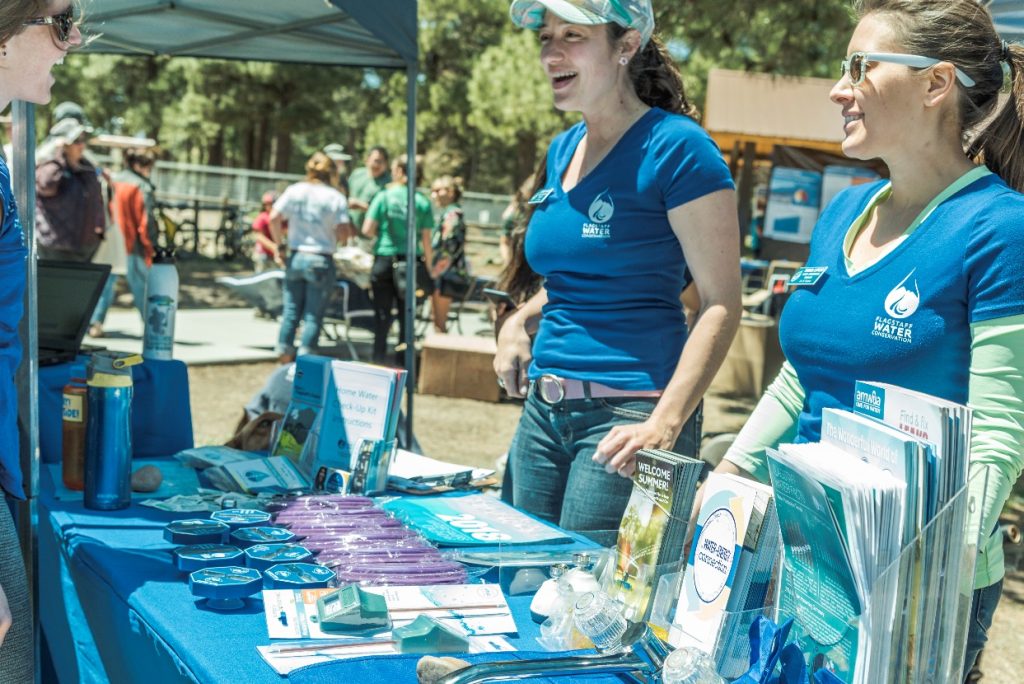“Here’s the bottom line: We’re in a 19-year-drought,” said Gov. Doug Ducey in his 2019 State of the State address. “It’s going to get worse before it gets better.”
According to Ducey, securing the state’s water future is now Arizona’s most pressing issue.
More than one-third — about 36 percent — of Arizona water comes from the Colorado River, making it the state’s largest renewable water supply, according to the Arizona Department of Water Resources (ADWR).
Arizona used about 7 million acre-feet of water — more than 2.2 trillion gallons — in 2017, about 21 percent of which went to municipal and residential use. Arizonans each use about 145 gallons of water per day, according to the ADWR.
Arizona is expected to grow by another 5 million people by 2050, and as the population grows and drought and climate change reduce water supplies, new approaches must be taken to ensure communities, wildlife, industry, and agriculture can continue to flourish, according to Western Resource Advocates.
The state legislature is still working to find consensus on a proposed Drought Contingency Plan (DCP), a pact between Arizona, Nevada, and California. The plan outlines how the states would cut water use from the Upper and Lower Colorado River Basins, which are fed by Lake Mead, near Las Vegas.*
If water levels at Lake Mead drop below 1,075 feet above sea level by the end of the year as projected, the U.S. Bureau of Reclamation will declare a water shortage. Water managers say without a DCP, Arizona will no longer be able to avoid a shortage.
*UPDATE: The Drought Contingency Plan was approved by the State Legislature in a sweeping vote. The next step requires congressional action to implement the federal components of the plan.
But the DCP does not solve Arizona’s water crisis, it only postpones it. Experts say urban water conservation and reuse is the best strategy for ensuring sustainable supplies of this limited resource — and much cheaper than obtaining more water from elsewhere.
Arizona cities are leading the way to a new conservation culture, educating residents of all ages on the importance of water stewardship.
Water – Use It Wisely
For example, the city of Mesa created the “Water—Use It Wisely” campaign almost 20 years ago, joined quickly by Phoenix and Scottsdale, to offer Arizonans more effective ways to limit water waste.
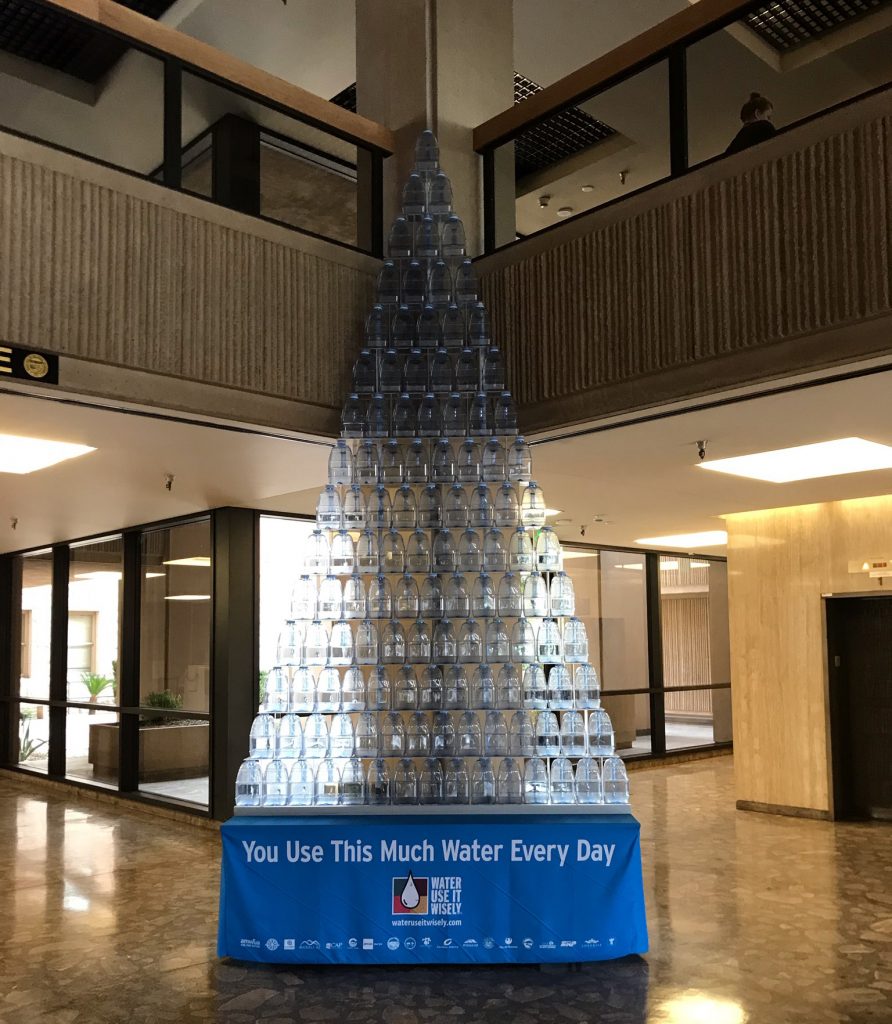
A 16-foot-tall pyramid of one-gallon water jugs has been on display in the Executive Tower of the State Capitol since the beginning of January, representing a physical depiction of the water the average Arizonan uses daily.
“The display reflects Governor Ducey’s expressed commitment to water issues during the current legislative session,” the ADWR said in a statement. “Those include protecting the Colorado River system, as well as emphasizing the theme of the long-running Water—Use It Wisely campaign, which is to bolster water conservation efforts in Arizona communities.”
“Water—Use It Wisely” targets people who are interested in conserving water and want to learn practical, realistic methods. According to the ADWR, a regional campaign partner, the campaign’s general message is: “Don’t tell us to save water. Show us how.”
The city of Mesa still owns the campaign but now has 20 regional campaign partners that contribute money to purchase media, including Tempe, Peoria, Chandler, Glendale, and Flagstaff, as well as organizations such as Arizona Municipal Water Users Association, Central Arizona Project and Salt River Project.
Mesa also allows free use of the campaign within Arizona; the cities of Tucson and Sedona, Luke Air Force Base and the U.S. Bureau of Reclamation are among the municipalities and organizations signed on to promote the message.
“When we created this partnership, the idea was everybody could pool their dollars, put money in, and then we could purchase media as this regional group rather than trying to do things individually,” said Donna DiFrancesco, conservation coordinator in Mesa’s environmental and sustainability division. “And especially the way the Valley is, with city upon city, these messages need to go across borders and not stop in one city and start in another.”
A survey early in the campaign indicated that 86 percent of Phoenix residents recognize the “Water—Use It Wisely” branding and the desired effect is for the campaign to shine through other issues people care about as a friendly reminder to keep saving water, DiFrancesco said.
“Sometimes you need those reminders that just give you that extra string around your fingers, like, ‘Oh yeah, I need to check my irrigation, I need to fix that leaky faucet,’ or whatever those things are,” DiFrancesco said. “It’s always hard with outreach when you’re not selling something. We’re not selling anything but how to save water, so we can’t base how effective our advertising is [off of] sales or anything like that, but we certainly can look at reduction in water usage.”
Phoenix residents and Arizonans as a whole have greatly reduced their water consumption in recent decades. But that change can also be attributed to better technology such as low-flow faucets and toilets, load-sensing washing machines and other modern, efficient appliances, DiFrancesco said.
“Water—Use It Wisely” includes more than 100 practical ways to conserve water among additional information on its website.
City of Phoenix
Education is the most powerful tool for building a water-conscious culture, according to Kathryn Sorensen, water services director at the city of Phoenix.
“You want to start with young kids and help them understand that, ‘Hey, water is precious here in the desert, you need to think about it differently,’” Sorensen said. “And then, of course, they take that home to their families and encourage their families to be water-conscious as well.”
The Phoenix Water Services Department offers free in-classroom presentations to students about water sources, Arizona water history and water, and waste treatment. The city also partners with the University of Arizona on Project WET, a Montana-based national nonprofit dedicated to delivering water education resources and organizing events to advocate for water conservation.
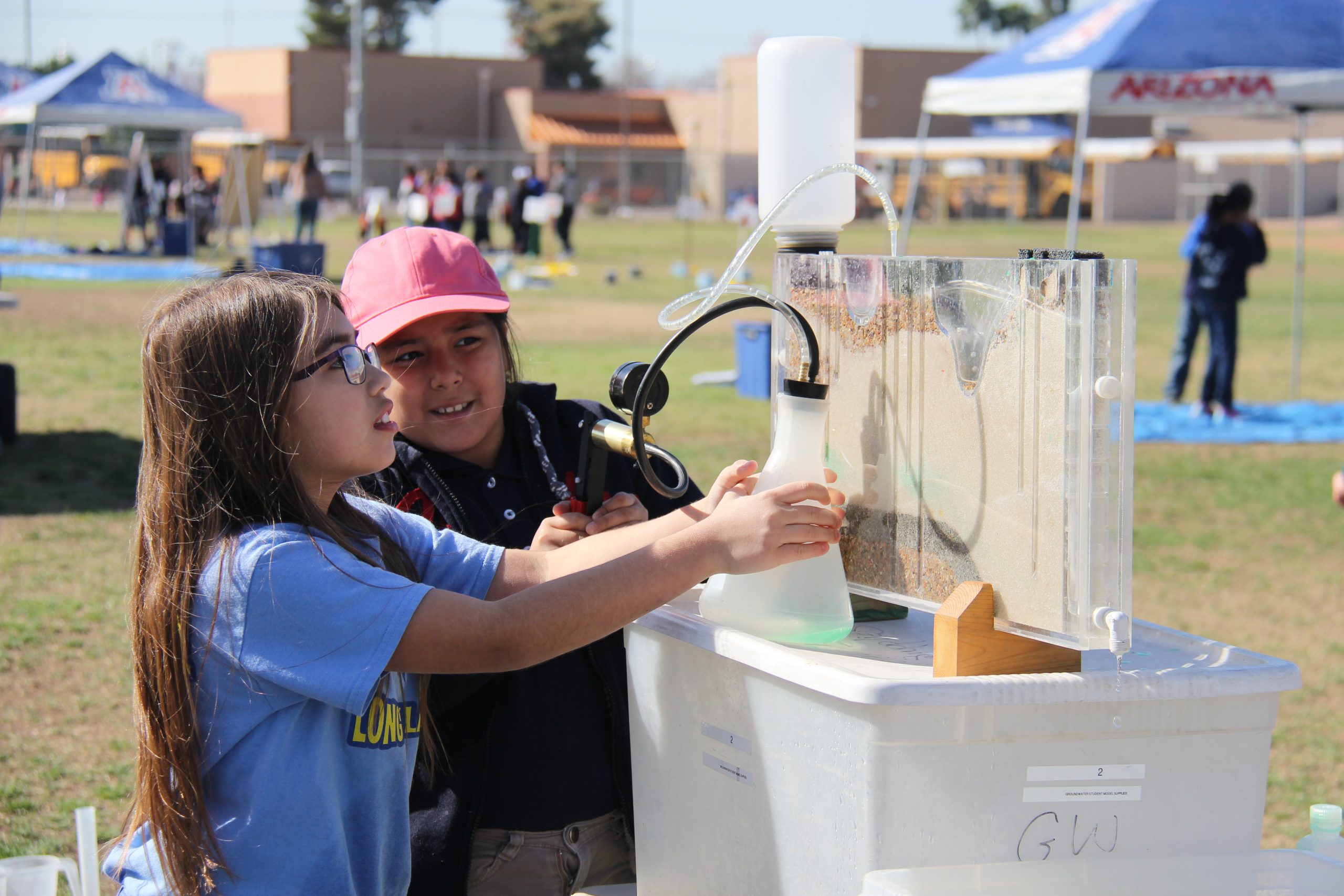
“We do teacher training, we have free conservation material on our website that parents, kids, teachers can go order,” said Stephanie Bracken, public information manager for the Phoenix Water Services Department. “We also have workshops for residents as well that are very conservation-focused… year-round, and they’re at your local library.”
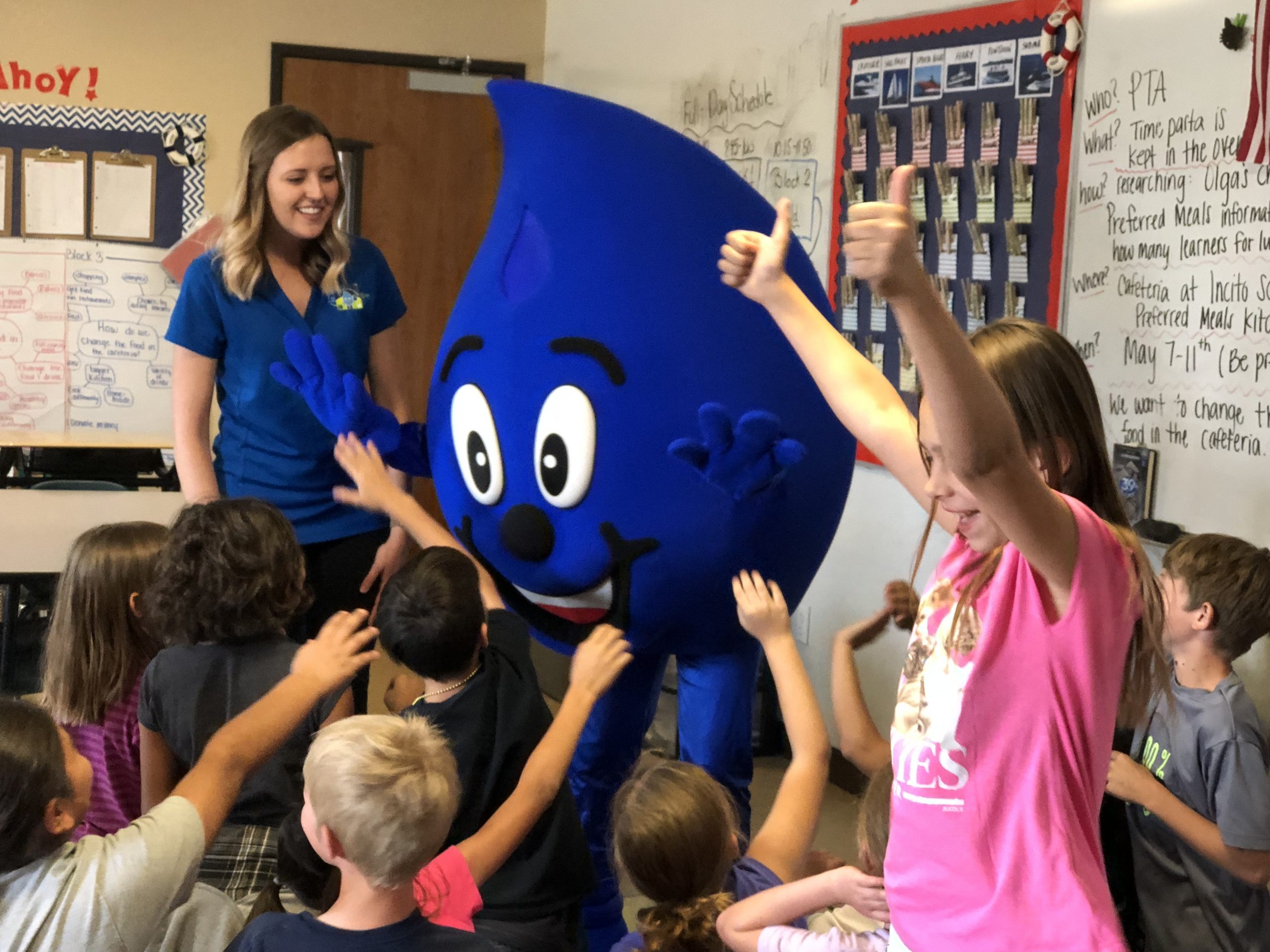
The other key element of water conservation in the desert is landscaping; lawns and non-desert plants use a lot of water, and switching to native landscapes is an inexpensive, low-maintenance way to conserve.
“One of the things that we focus on here at the city of Phoenix is making sure that our water rates are structured to signal the scarcity of water here in the desert,” Sorensen said. “We actually charge more for water in the summertime than we do in the wintertime. And what that does is it sends a direct signal to our customers about outdoor landscaping, because if you maintain a lot of lush landscaping it needs a lot of water in the summer.”
In 1978, about 80 percent of single-family homes in the Phoenix area had mostly grass landscaping. By 2014, that number dropped to 14 percent. Additionally, water usage on a gallons-per-capita-per-day basis in Phoenix has fallen 30 percent in about the last 20 years.
“People have become far more efficient with their water use, and that means that basically, we serve the same amount of water in total… today as we did 20 years ago, but we serve 400,000 more people with that same amount of water,” Sorensen said.
Businesses in Phoenix see a benefit from desert-adapted landscaping, too, as water rates rise in the summer. Phoenix Water Services is partnering with Public Works and its Green Business Leader Program.
“They really promote recycling, so we’re plugging into their program,” Bracken said. “[We’re] going to be offering businesses free water audits and tools that they need to help them conserve water the right way, have the right equipment and ultimately save money on their bills.”
City of Tucson
The city of Tucson has been promoting water conservation programs since the mid-1970s with a substantial positive response from community members and elected officials, said Fernando Molina, public information officer for Tucson Water.
“There’s a strong ethic and a strong level of support for water conservation programming in Tucson, and we have a very low per-capita usage rate,” Molina said, noting the limited allocation of water Tucson receives from the Central Arizona Project. “If we can reduce our water use through efficiency measures that we take, then that volume of water that we have will go further for us.”
Tucson has a “full range of programming” to publicly promote water conservation among residents and businesses, including youth and adult education programs, rebates for water-efficient appliances and campaigns for low-water landscaping practices such as rainwater harvesting.
Landscape choices are important because water used outside — referred to as consumptive use — does not return to the city water system for treatment and recycling and therefore becomes “lost,” Molina said. Unaddressed leaks can have the same effect.
“If you know you have a leak, fix it,” Molina said. “Don’t wait until it gets really bad and your bill skyrockets.”
Water use in Tucson has dropped to the point that additional infrastructure is not needed, Molina said.
“I think we’ve been very successful, and its impact has shown not just in the lower demands for water, but we’ve been able to reduce some expenses because we don’t use as much water as we used to,” he said.
City of Flagstaff
The city of Flagstaff offers residents and businesses free checkups from the city to see if their water-using devices are working efficiently and to check for leaks, as well as rebates for replacing lawns with low-water-use plants and installing low-flow toilets and faucets.
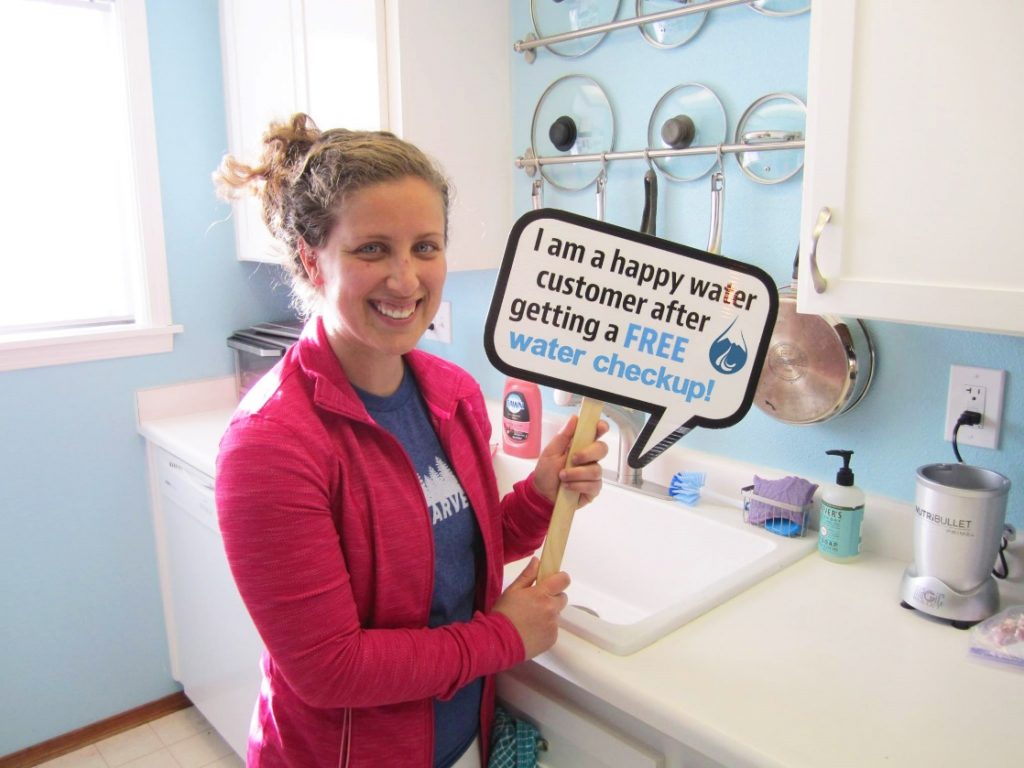
Flagstaff also recognizes businesses that take extra water-saving measures by putting them on the city website, giving the business owner a certificate of their predicted annual water savings and promoting them as a Water-Wise Business on social media.
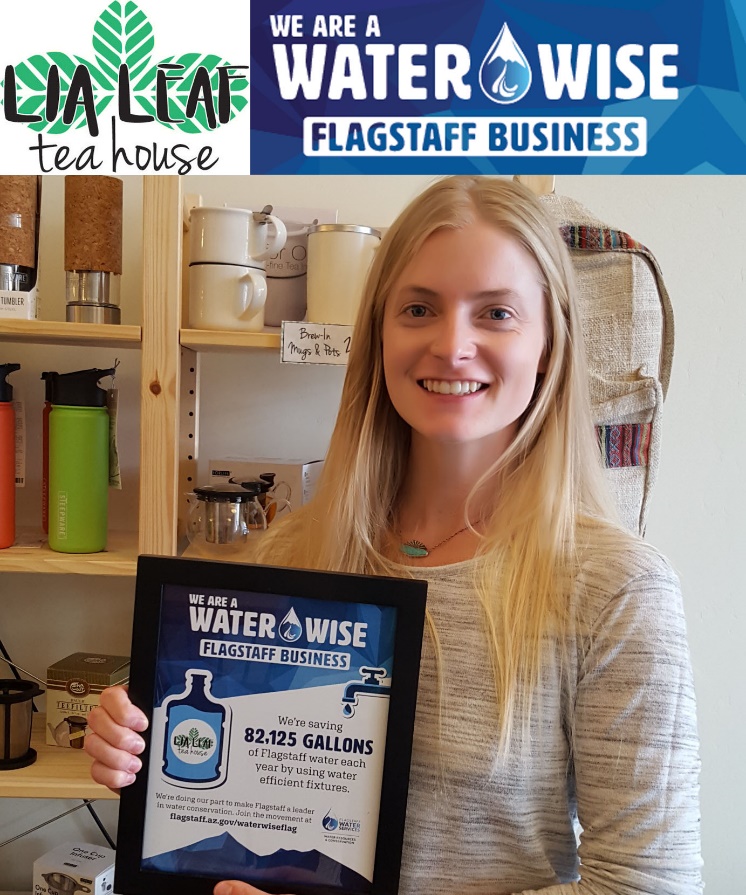
According to the city, Flagstaff’s Water Conservation Program has helped customers reduce their water use by 50 percent.
Creating a sustainable water conservation culture for the future comes down to education and preparation — no single approach is enough.
“When California went through its drought a few years ago and things got really dire, what you saw there wasn’t so much conservation as just crisis messaging,” Sorensen said. “We would rather be proactive and look at conservation for the long-term, in terms of changing our culture, so that when crisis comes we don’t have to be reactionary. We’ve already built that culture of wise water use.”
Coconino County Sustainability Manager Amanda Acheson recently commended local elementary school children for their knowledge about the importance of water conservation after the ninth annual fourth-grade water ethic contest, hosted by the Coconino Plateau Watershed Partnership and Willow Bend Environmental Education Center.
“Water conservation — everyone can do it,” Acheson told the Arizona Daily Sun. “From a renter to a homeowner, from big to small, budgets of all size. We can all be a part of the solution.”
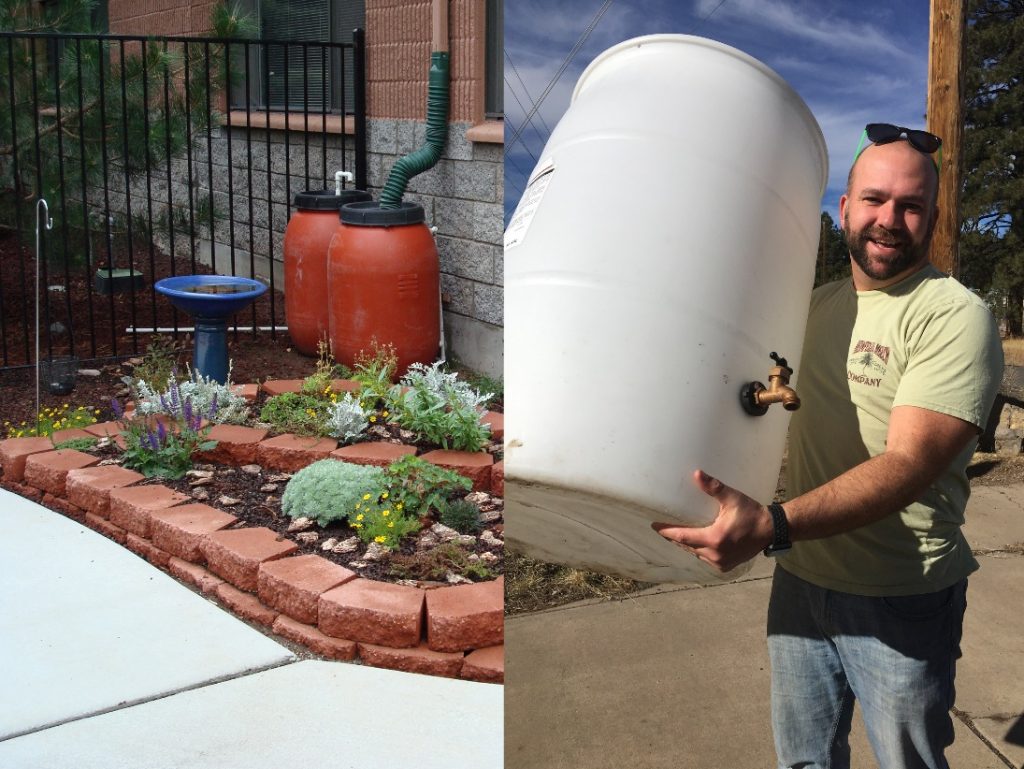
This article originally appeared as a “water, energy & natural resources story” at the Chamber Business News on January 29, 2019, and is being reprinted with permission. Water – Use It Wisely is proud to feature guest bloggers who write about topics related to water and water conservation. The author of this blog is a multimedia reporter for Chamber Business News, a digital media platform that delivers insider information, engages newsmakers and addresses statewide issues that drive Arizona toward a brighter and more prosperous future. Graham Bosch graduated from ASU’s Walter Cronkite School of Journalism and Mass Communication in 2017 with a focus in videography, and he enjoys writing stories that inspire people to live more sustainably. Graham lives in Tempe with his girlfriend, Sabrina, and their dog, Winston, and loves to travel whenever possible.
The Chamber Business News provides the latest breaking business and political news, insights, and analysis that engages newsmakers and addresses statewide issues that drive Arizona toward a brighter and more prosperous future.


